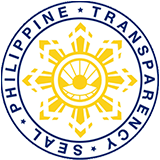The city government of Baguio through the Office of the City Social Welfare and Development (OCSWD) and the Department of Social Welfare and Development (DSWD) shared the final list of poor households in all barangays in the city.
A total of 2,085 households or 3.89% were identified as poor out of the 53, 052 assessed households. The assessment was conducted in October to December 2014 and the validation of the assessed households was held in April to May 2015.
The final list is the result of the assessment conducted through the National Household Targeting System for Poverty Reduction (NHTS-PR), also known as Listahanan, of the DSWD which was the output of the Skill Enhancement Training for the Youth funded through the city government’s Bottom-Up Budgeting (BUB) process.
“The conceptualization of this assessment project started wayback in 2013 through the BUB to provide skills training and employment for the out-of-school youth (OSY). By addressing the unemployment, we also wanted the project to have an output that could be used by the city government in its evidenced-based planning; hence, we came up with the household assessment for an updated socio-economic profile of Baguio City,” City Social Welfare and Development Officer Betty Fangasan said.
The project has a total amount of ₱7,780,000.00 with ₱5,984,615.65 coming from the BUB fund and ₱1,795,384.35 from the local fund of the city government of Baguio.
“Through this endeavor, we were able to train the youth and employ them as enumerators, encoders and verifiers, and come out with the updated database of the city,” Fangasan added.
The OCSWD hired youth recommended by the barangay officials for the positions of 105 enumerators, 22, encoders, and 22 verifiers.
Also, Fangasan shared that several of them are now hired in private companies like the Philex Mining Corporations, foreign companies aboard, and hired by the DSWD and TESDA.
“The Philippine Statistics Authority also hired most of the OSY as enumerators, encoders, and verifiers in the conduct the 2015 Census because of their experience gained in the Listahanan’s household assessment in the city,” Fangasan added.
Fangasan also said they carefully deliberated on what assessment framework and agreed that the framework of NHTS-PR was most apt in generating a socio-economic profile of the city as well as in determining who and where the poor are.
Likewise, City Councilor Betty Lourdes Tabanda appreciated the database of the Listahanan since it provides for a unified set of criteria in determining the poor and non-poor households.
“What is usually perceived in determining poor households is the income of the household members when in fact there are other factors affecting the status of the household, which the Listahanan has used in this assessment,” Councilor Tabanda said.
With the final result, one of the proposed projects for the identified poor households is the provision of short-term/vocational scholarship under TESDA which will be funded under the 2015 BUB of the city government. # DSWD-CAR, Social Marketing Unit, Kaye Ann O. Mapalo




